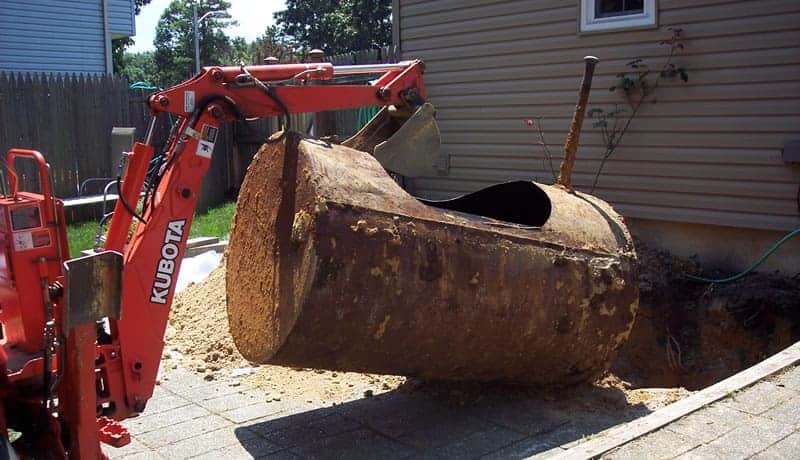
By Barry Aruda, Northeast Regional Account Manager, AFS
During a recent visit with one of my customers, we got caught up in the past!
I’m sure we all remember the Three Stooges bit where Curly discovers a leaky pipe, and the laughter that ensued when he stuck chewing gum over the leak in order to stop the water from spraying him in the face. Of course, it didn’t work, but it’s a classic moment in television idiocy.
That comedic moment, my customer and I agreed, isn’t too far from an actual truth in the oil industry. Allow me to share some of our conversation.
It all begins with the ancient tank. I say ancient because, let’s face it, many of the tanks your technicians encounter in the field aren’t exactly spring chickens. They’re old. The customer knows it, and you know it. Still, each of us go on believing that this 30 or 40 year-old piece of technology has the ability to hold up. Often times, that’s simply not the case. Structurally, we know the tank is not sound, and just waiting for the perfect time to let go. How’s 2:00 AM on February morning sound? Not ideal, I’m sure.
When we talk about tanks “letting go,” we may envision a catastrophic failure, resulting in oil leaking onto a basement floor in a chaotic pool of black gold. What’s more likely, is that a tank will let go with nothing more than a pin-hole sized opening. Although it’s small, this failure is the end. Whether or not the tank is inside or outside, technicians (should) know that the tank is not to be filled until it is replaced.
So, why did this happen? Well, first of all, remember that the tank is 30 or 40 years old. Would you drive a car that age if it hadn’t been meticulously maintained? Of course not. Would you rely on a piece of medical equipment half a century old? Nope. The truth is that many tanks should have been replaced long before they expired, but people simply do not want to think about the added expense. I don’t have to tell you that it’s far more expensive to clean up a messy, oily basement, than it is to replace the tank proactively.
So, tank inspection is important. We understand that. How about what’s in the tank? How is that affecting the outcome?
Remember the chewing gum that got Curly into trouble? The reality is not such a stretch.
Inside those tanks is what we, in the business, call “legacy sludge.” It’s old (just like the tank) and has likely been there for decades. It’s the degradation of fuel, time, and temperature that creates this blob in the bottom of the tank. It’s a corrosive nightmare, full of microscopic bacteria that love to eat fuel and excrete acetic acid which, if you didn’t realize, is corrosive to steel.
One of the things this legacy sludge does that people don’t often think about, is act like chewing gum to plug up a hole that’s developed from corrosion. When ultra-low sulfur fuel is put into a tank with said sludge, ULSHO and the presence of biodiesel can act as a mobilizer of the sludge, drawing it off the hole, and creating a leak.
This happens all of the time. Dealers scratch their heads and will often ask me, “Is there any reason I’m seeing an increase in tank failures?” Well, yes, there is a reason.
The fuel has changed, our equipment and way of thinking has not.
What can we do about it as an industry? The answer is simple. First, make sure periodic tank inspections are being conducted, either through an examination with the naked eye for obvious signs of degradation, or through the use of sonar technology. Don’t be afraid of it, they make it fairly simple.
Secondly, treat the fuel with a cutting-edge additive, one that is rated for stabilization, not only for ultra-low sulfur fuels, but also one that can handle biodiesel blends that are prevalent in our market today.
Finally, be proactive in your thinking, and in the manner in which you communicate with your customer base. From a dealer standpoint, a high-margin tank install is a great profit booster. From the customer’s perspective, they will listen to your recommendations (and they may groan), but ultimately, they will understand you are doing right by them to protect them from the much costlier avenue of tank failure.
Lesson learned, Curly! Fortunately, with a thoughtful tank housekeeping strategy and fuel quality program in place, we’ll keep the peril of bubble gum releases and tank failures at bay!

